The simulation shows the far reaching effect of the Tonga eruption. The animation also demonstrates how waves connect the atmosphere and the space environment. Movies Captions only Narration only https://vastgallery.s3.us-west-1.amazonaws.com/Weather/TongaEruption/v6_FinalBeforeCaptions_withVoiceOver.mp4 Science Credits Han-Li Liu Computational Modeling Han-Li Liu, Peter Lauritzen, Francis Vitt, Steve Goldhaber Computational Resources NWSC/Cheyenne; NASA/Pleiades Visualization and Post-production Matt Rehme, Sarah Vitt…
Read moreAuthor: VAST Staff
WRF-Fire: East Troublesome Wildfire from Granby, CO
On October 14, 2020, the East Troublesome Wildfire ignited. It burnt 193,812 acres over the course of 48 days. Between October 20-23 the wildfire rapidly intensified, exploding from 18,550 acres to 187,964 acres in size.* These visualizations show a Weather Research & Forecasting (WRF) simulation of the East Troublesome Wildfire from the perspective of Granby,…
Read moreSimulation of Marshall Wildfire
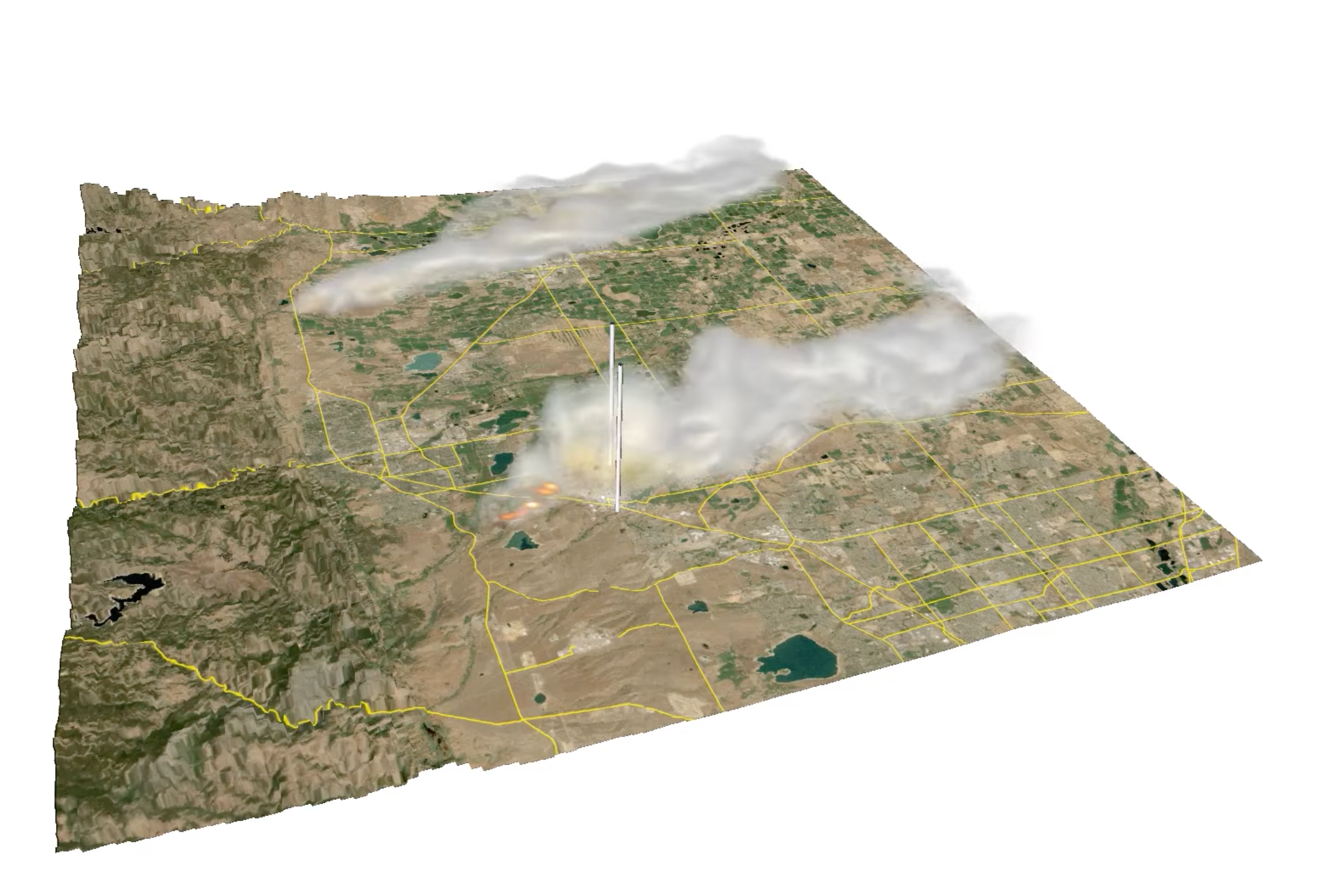
On December 30, 2021 the Marshall wildfire grew to be the costliest wildfire in Colorado’s recorded history. This simulation shows the spread of the fire through the towns of Superior and Louisville, CO, and some of the dynamic winds that caused this devastating event. Movies Science Credits Janice Coen (MMM) Computational Modeling Janice Coen (MMM)…
Read moreLeveraging Variable Resolution Capabilities in the Community Earth System Model (CESM) – Greenland

The System for Integrated Modeling of the Atmosphere (SIMA) has rolled out two new variable-resolution configurations with regional refinement over the Arctic and Greenland*. This is a 3D visualization of a simulation using the Greenland grid, which refines the big ice sheet with 1/8˚ grid resolution. The visualization shows that storms traverse the refinement region…
Read moreWeather Systems in a World without Land or Seasons
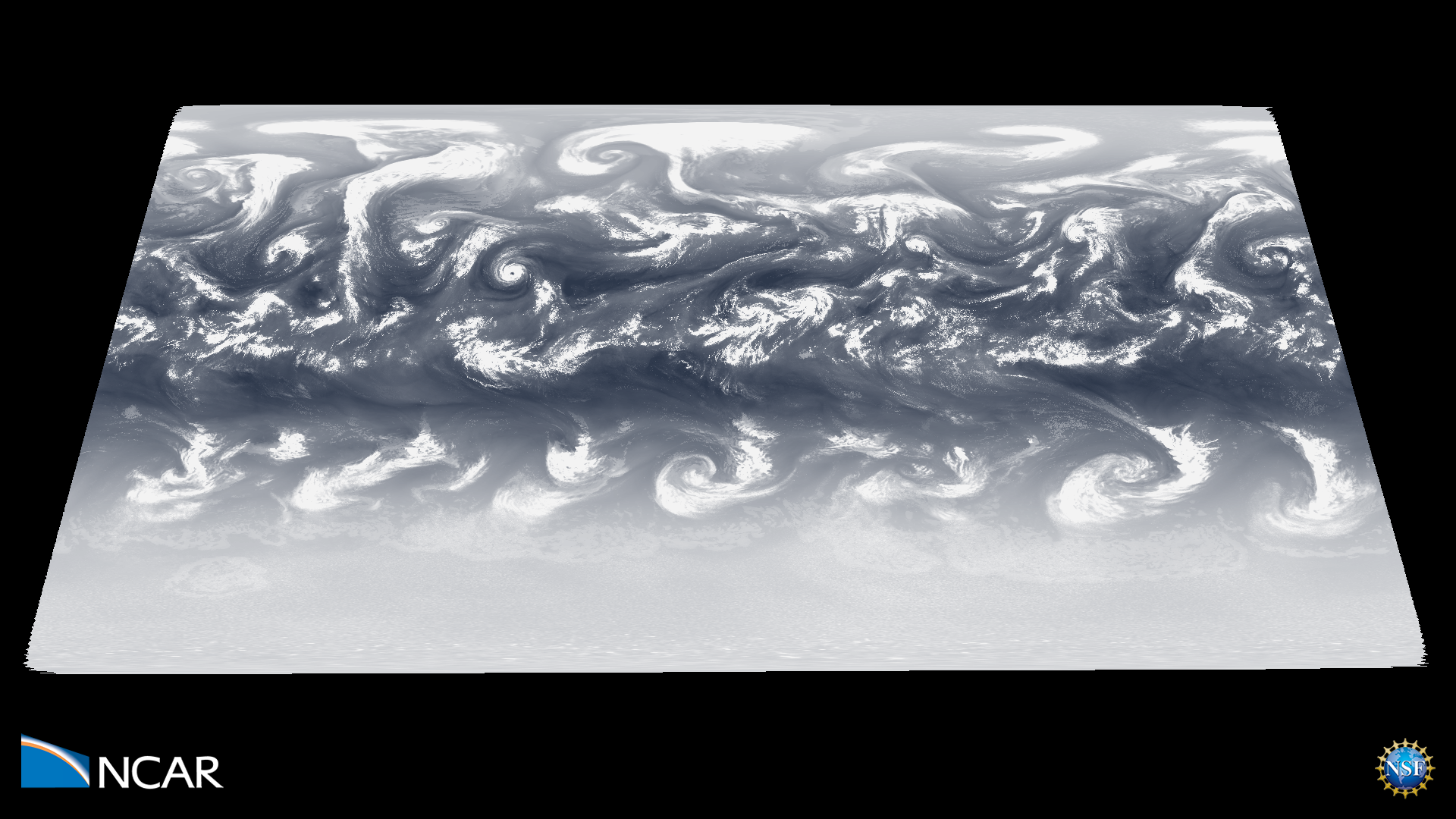
Aquaplanet simulations—as their name suggests—are idealized representations of Earth where the planet is covered entirely by water. The absence of continents, while unrealistic, provides a clean laboratory where weather systems can develop, evolve, and dissipate as they would do over Earth’s oceans. This kind of simulation is, therefore, useful for learning about the fundamental processes…
Read moreCCSM Spring Snow Cover
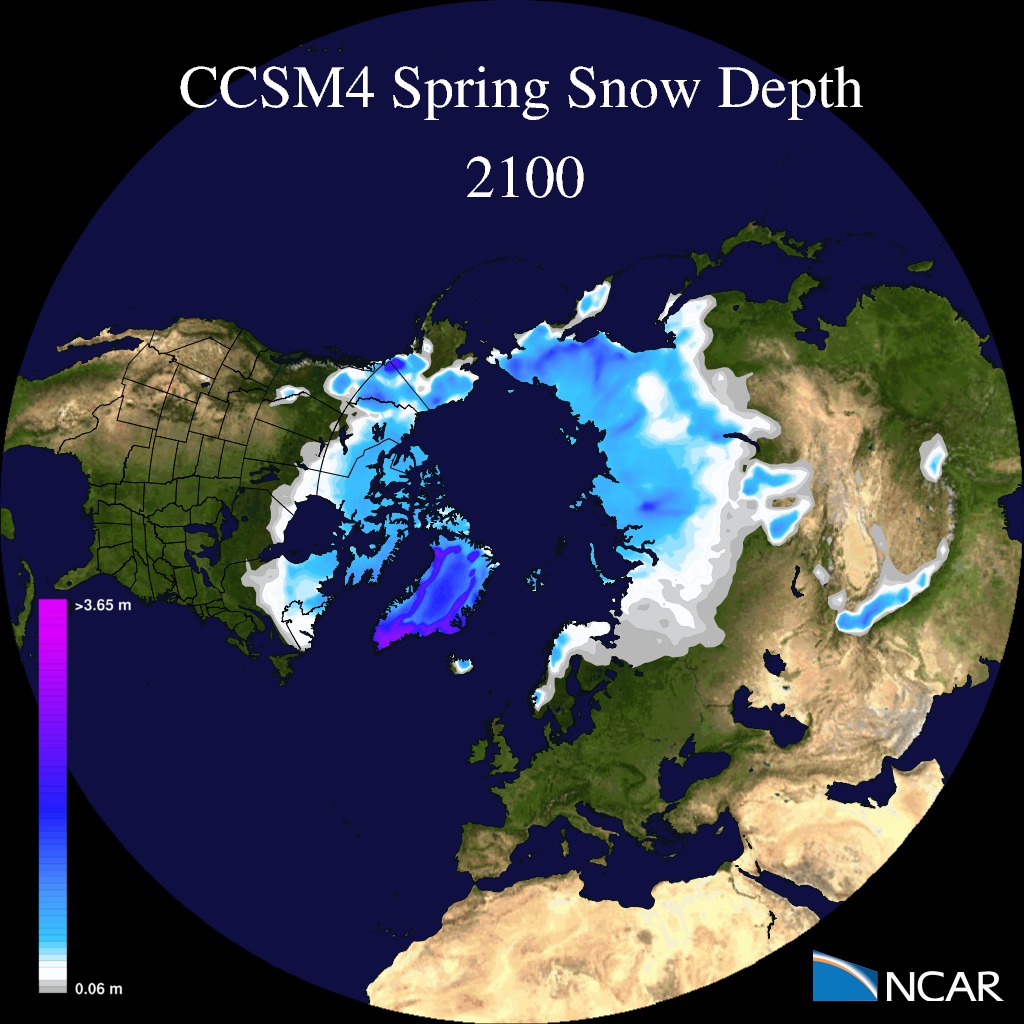
This visualization shows 4-year running means of snow cover over North America from 1853 to 2100. These visualizations were created using the Community Climate System Model (CCSM). Primary sponsors of CCSM are the National Science Foundation and the U.S. Department of Energy, Office of Science. Movies North American Snow Depth Movie file (6MB) Polar Disk…
Read moreOcean Surface Boundary Layer Turbulence Under Hurricane Irene

Simulated ocean surface boundary layer turbulence under Hurricane Irene (~9:30 UTC, August 28, 2011) entrains cold bottom water that cools the sea surface and weakens the hurricane as it makes landfall on the New Jersey continental shelf. Large-aspect-ratio coherent structures that modify the evolution of the mean sea-surface temperature are highlighted in a 2 km by 2…
Read moreCoalescing Droplets in Turbulence
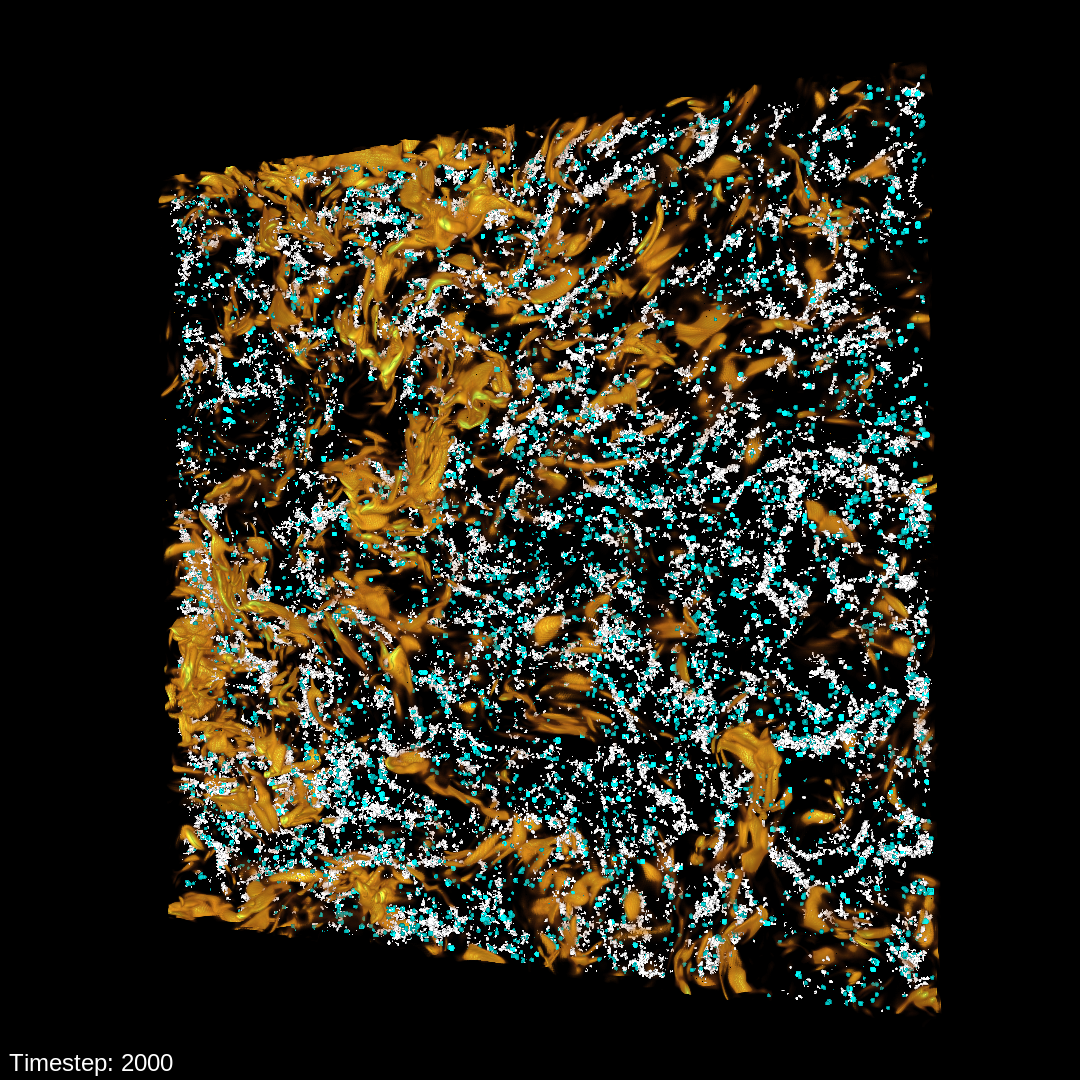
Precipitation in warm clouds can be explained by coalescing water droplets. This coalescence can be accelerated by turbulent vortices within the cloud. In this visualization, we see how this turbulence drives the coalescence of large and small droplets. Movies Movie File (.mp4, 224MB, 1920×1080) Images Science Credits Melanie Li Sing How (Cornell), Lance Collins…
Read moreHRRR Smoke in the Summer of 2020
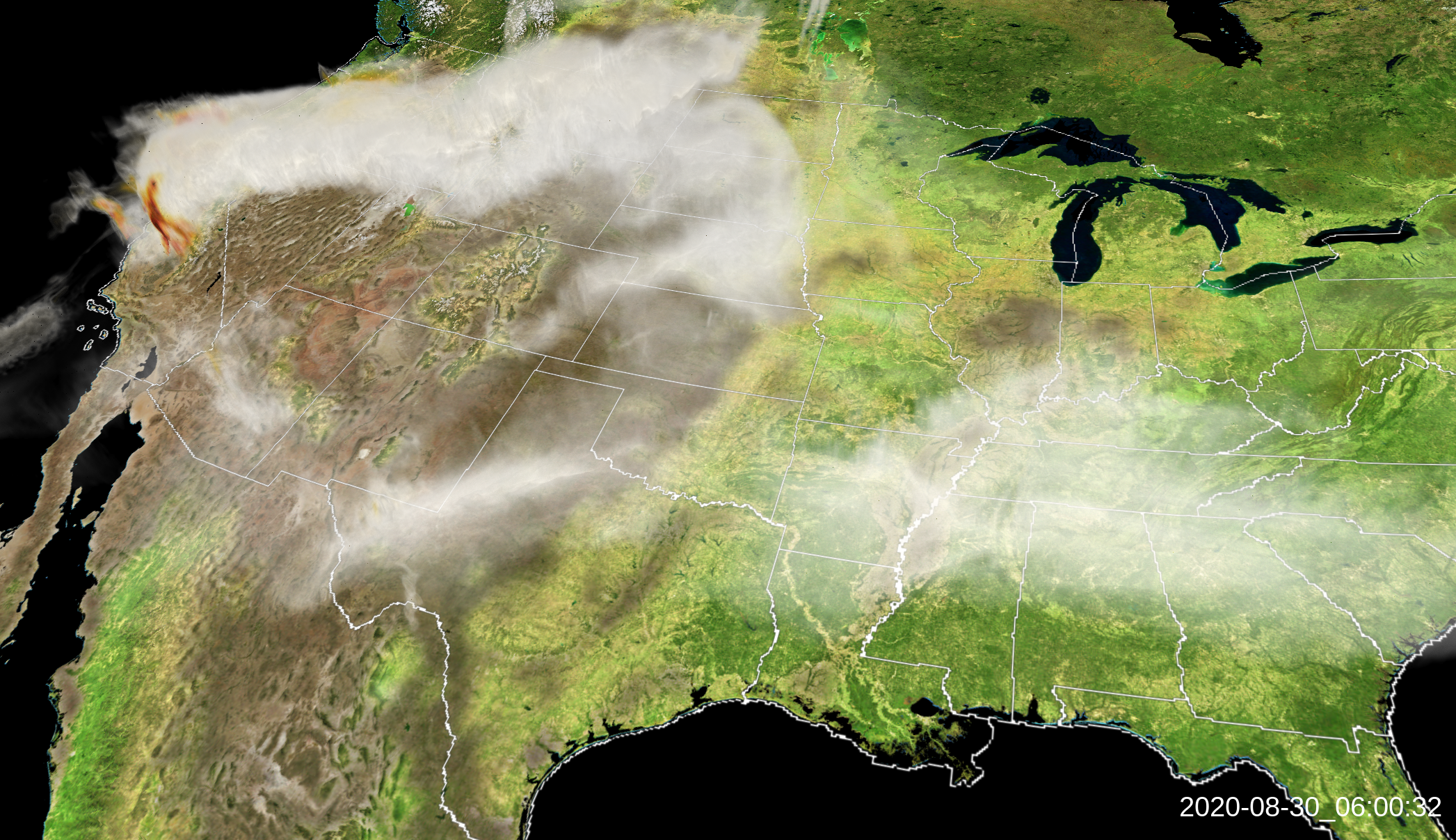
These volume renderings show the simulated dispersal of smoke generated with the High Resolution Rapid Refresh (HRRR) model. This visualization emphasizes the Western wildfires during the last days of August, 2020. Science credit to Ka Yee Wong and Ravan Ahmadov, of NOAA’s Global Systems Laboratory. Movies Movie File (430 KB, MP4) Images Science…
Read moreWater Vapor Content of the Current and Future Climate of North America
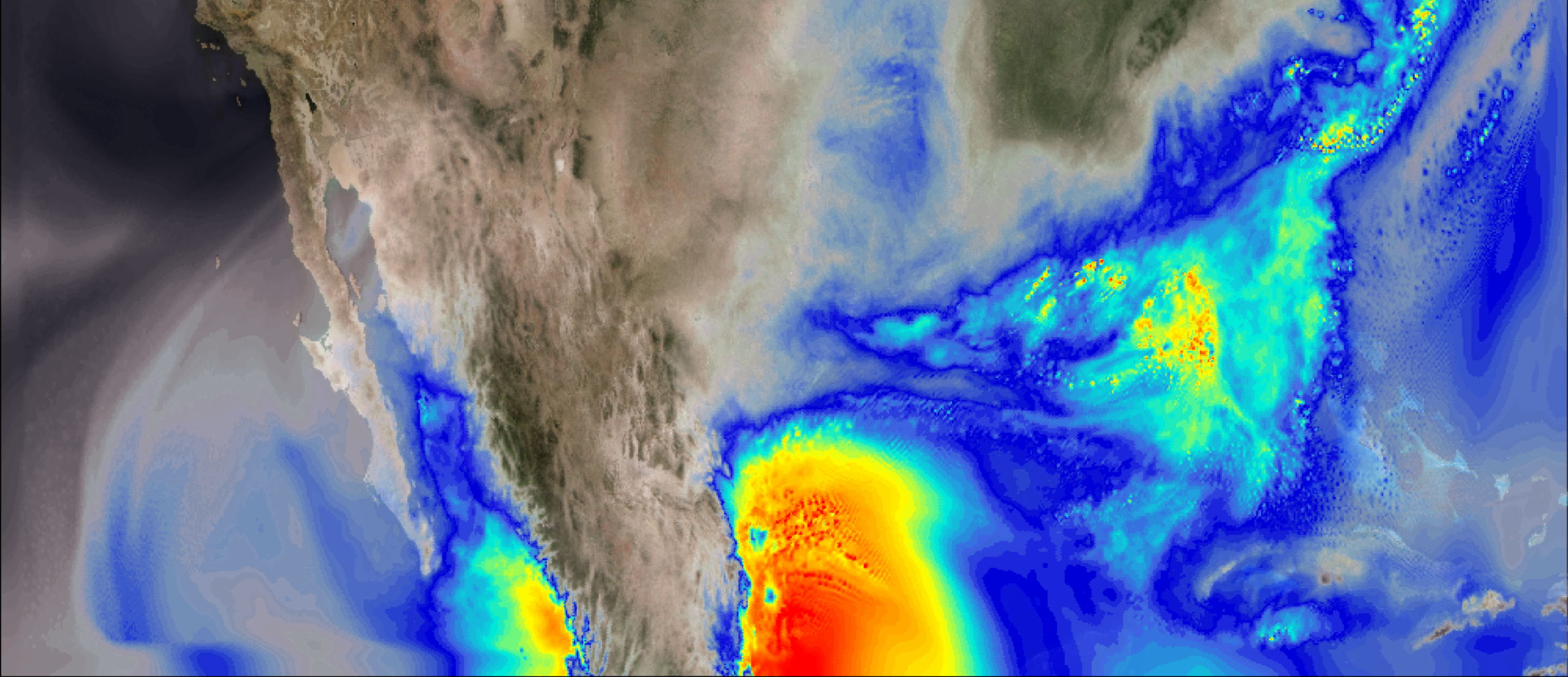
This visualization shows column integrated water vapor content over North America for the period April to June 2011, during which time one of the most destructive and deadliest tornado outbreaks to impact the United States occurred (April 25-28). Side-by-side comparison of the simulations show greater water vapor content in the simulated future climate, which can…
Read more